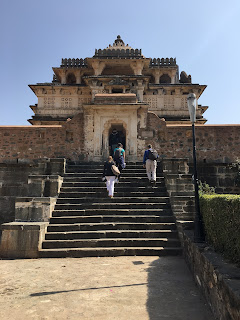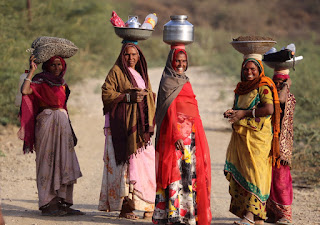As we were visiting the forts and palaces, we saw many school groups as well. The groups we saw were all girls or all boys of all ages. We often saw children in uniforms headed to or from school. In the cities, there were many advertisements for private schools.
 |
| Boys on a field trip to the Red Fort in Agra |
 |
| Girls on a field trip to the City Palace in Udaipur |
 |
| These children are working to help their parents fix the walls at the "Baby Taj". They are not in school. |
World Literacy Rates in 2013
 |
| en.wikipedia.org Source: UN Human Development Report Individual Statistics 2013 |
In India, the literacy rates, the number of people who can read and write a simple passage is different for men and women. Overall in 2011, the literacy rate in Rajasthan was 66.11%. This means that for every 10 adults, three cannot read or write. In Rajasthan, and other parts of the country, women and girls are much less likely to learn to read and write than men and boys. In 2011 only 47.76% of the women were literate. This means that more than half of the women in Rajasthan cannot read or write.
For more information and a map of regional differences concerning literacy in India, please click on this link https://en.wikipedia.org/wiki/Literacy_in_India
Going to school and learning to read and write can change what you can do. If you cannot read or write, what kinds of jobs do you think you might be able to do? What challenges do you think you might have?
What do you think stands in the way of women and girls being able to go to school? In 2015 80.9% of the men and boys over 15 in India were literate and 62.8% of the women and girls were literate? Do you think it is ok for men and boys to be able to read and not women and girls?






























































